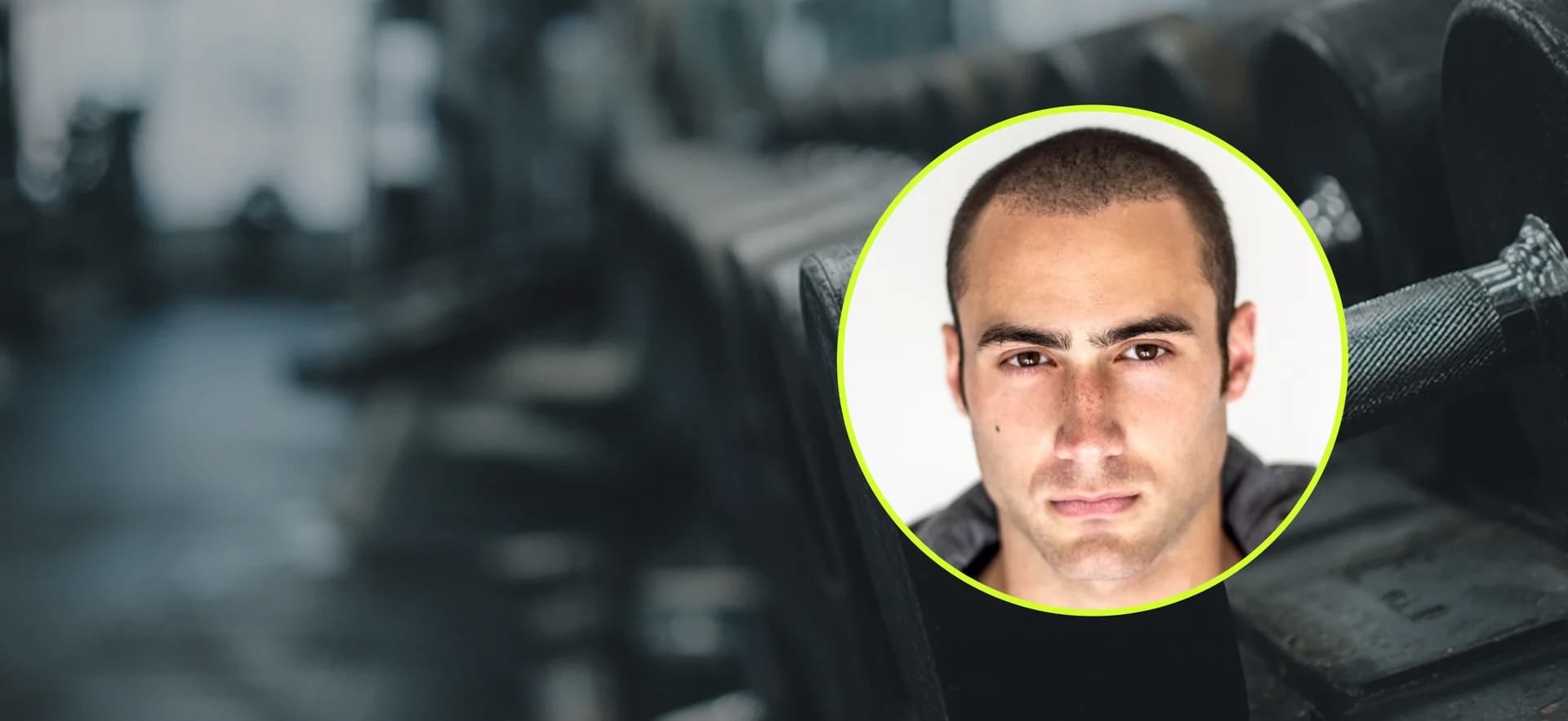Stephen Neider — From Construction Sites to Corrective Movement
Meet Stephen Neider, a mobility specialist who went from construction work to corrective exercise. Learn about his holistic approach combining cupping, needling, and neurological work.

PT Spotlight: Stephen Neider — From Construction Sites to Corrective Movement
Meet Stephen Neider, a mobility specialist who combines traditional training with holistic healing practices. From studying the human body since age four to developing a unique system that addresses root causes rather than symptoms, Stephen's approach to fitness is anything but conventional. Stephen created a Neck Mobility Program for free: Go to program
What first made you want to coach people?
Stephen: I mean, nothing specific pushed me into it. I've been studying the human body since I was four. I started learning the neurological system, meditation, Reiki—which I never do because if you don't know what you're doing, you can really mess people up.
When I was 15, I did a work program because I didn't like sitting in class, so I got a job at a gym and just started following trainers around and getting clients. My first client was my cousin. He'd been fat his whole life—6'4", 380 pounds—and I got him down to 180, then back up to 220 with muscle. That was my first real client, and I thought, 'Oh, this just makes sense.'
What's the holistic approach you take?
Stephen: If someone's having kidney failure or their liver's shutting down, I put them on a massage table. I make a map of their body, start at the head, and feel where the tightness is. Where it's tight tells you where the imbalance is.
Then I do massage to loosen, cupping to pull heavy metals and inflammation, needling to open the skin, and wet cupping to pull the blood and relax everything. Then I realign gently, stretch them back into alignment, and follow with corrective exercise, mobility, and neurological work like meditation. That's the system I use.
Can you explain cupping, especially wet cupping?
Stephen: A lot of people do dry needling and cupping wrong. They just put cups all over their back—it spreads inflammation and then it seeps back in. You need to find the right spot.
Wet cupping works after you break the skin and blood comes out. I just did my shoulder last night—pulled out almost black blood, which means it's old and full of heavy metals. Once it turns bright red, that's new blood coming in. It's like an oil change for your body—it pulls out the old, stagnant oil and lets new blood flow so everything heals.
Is there something you believed in the beginning that you abandoned later?
Stephen: When I was younger, I thought I could just do constant explosive movements and keep going up in weight. My muscles could handle it, but my tendons and joints weren't ready. I was deadlifting and squatting almost 500 pounds for reps. Over time my joints couldn't handle it.
Now I only deadlift light and use it as a weighted stretch. I focus on what I'm actually doing, not just pulling weight.
What type of person do you know you can help best?
Stephen: Anybody with nagging pain—like tennis elbow, shoulder pain, back pain. Other trainers say 'just massage it,' but that's just treating the symptom. I fix the shoulder and neck because that's where it starts. Tennis elbow is just the symptom. Same with back pain—it's usually hips out of alignment.
So yeah, I fix the system, not the symptom.
Is it mandatory to go through the corrective process before training?
Stephen: Not mandatory. I always assess. If they don't want the six weeks to correct how they move, I build it into their workouts.
I had this lawyer—sat 12 hours a day—didn't want corrective work. I told him he'd get hurt. He went to another trainer and got hurt in six weeks.
What's the most important thing you track?
Stephen: I watch their range of motion, how they move, how they walk. If we're doing box jumps, how their knees move, how fluid they get. The main one is how they feel—when they say 'my back doesn't hurt,' 'my shoulders feel better,' that's when I know it's working.
Is there a general belief in fitness you disagree with?
Stephen: Yeah, a few. The 'don't let your knees go over your toes' one—it's stupid.
Also, deadlifts. They're overrated and overused. High risk of injury, low reward. Professional athletes don't even do them. You get more out of full-body, explosive moves like kettlebell swings.
What would you tell someone who wants to start moving?
Stephen: First thing—get up, drink water, go for a walk. You're retraining your brain to move. If you wake up and scroll your phone, you're training your brain to stay still.
Then start doing mobility and yoga so your body's ready when you hit the gym.
What would you tell your younger self or a new trainer?
Stephen: I'd tell them to study mobility. Mobility should be the base of every workout. If your joints are weak and tight, your tendons take over, but they're not strong enough. Mobility keeps your joints and tendons strong so you can do anything without getting hurt.
Find Stephen at: Steve Neider Training
Want to be featured in our next PT Spotlight? Apply via crew@juice.fitness